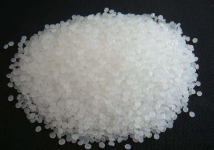read: 1057 time:2025-07-02 17:08:35 from:化易天下
Acetic acid is a common chemical compound with the formula CH₃COOH, known for its use in the production of vinegar. When acetic acid is in its purest form, without any water content, it is often referred to as glacial acetic acid. But why is pure acetic acid called glacial acetic acid? The answer lies in its unique physical properties and behavior under specific conditions.
At room temperature, acetic acid is a colorless liquid with a pungent odor. However, when the temperature drops to around 16.7°C (62°F), pure acetic acid undergoes a phase transition and solidifies, forming icy-looking crystals. This crystalline appearance is where the term "glacial" originates. The word "glacial" is derived from the Latin word "glacies," meaning ice. Therefore, pure acetic acid is called glacial acetic acid because, like a glacier, it can form solid crystals at relatively moderate temperatures.
For acetic acid to be classified as "glacial," it must be in a highly pure state, typically with a purity level of 99.5% or higher. Even a small amount of water can prevent acetic acid from freezing at the aforementioned temperature, thus disrupting the formation of these "glacial" crystals. The high purity of glacial acetic acid not only gives it its name but also enhances its usefulness in various industrial applications. Its concentrated nature makes it an essential reagent in the production of chemicals, pharmaceuticals, and solvents.
Glacial acetic acid is widely used in the chemical industry due to its high acidity and low water content. It serves as a crucial raw material in the production of vinyl acetate monomer (VAM), which is a precursor to polyvinyl acetate (PVA) and polyvinyl alcohol (PVOH), both important in adhesives, paints, and coatings. Additionally, glacial acetic acid is used in the manufacturing of acetate esters, which are solvents in inks and coatings.
In the laboratory, glacial acetic acid is preferred for analytical procedures where water content must be minimal. Its ability to absorb water makes it useful as a dehydrating agent. Furthermore, due to its pure, undiluted state, glacial acetic acid is used as a reagent in organic synthesis, where precise concentrations are necessary.
In summary, the term "glacial acetic acid" originates from the unique property of pure acetic acid to solidify and form icy crystals at temperatures slightly below room temperature. The "glacial" descriptor not only highlights its ability to resemble ice but also underscores the necessity of its purity for industrial and laboratory applications. Understanding why pure acetic acid is called glacial acetic acid helps us appreciate its role in various chemical processes and its importance in maintaining stringent quality standards.

Jincheng Petrochemical's 300000 ton polypropylene plant successfully trial production, 2024 polypropylene market analysis

The ABS market remains sluggish, what is the future direction?

Market differentiation of bisphenol A intensifies: prices rise in East China, while prices generally decline in other regions

The production method and process flow of silicone acrylic lotion, and what are the common raw materials